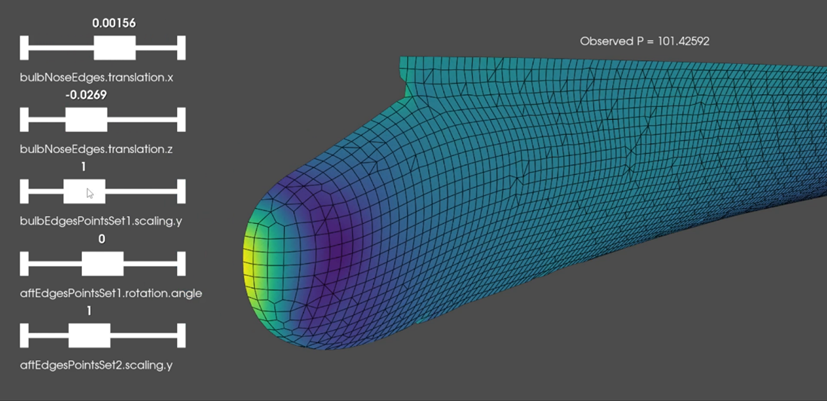
ENGYS completed the development of the proof-of-concept (PoC) for an effective and efficient numerical procedure conceived to design and optimize ship hulls by leveraging reduced order model (ROM) of Computational Fluid Dynamics (CFD) fields relevant to the marine sector. The proposed procedure consists of two sequential stages: an off-line stage and an on-line stage.
In the offline stage, a baseline CFD case is generated to simulate the calm-water resistance of the KCS hull model using the Reynolds-averaged Navier–Stokes (RANS) linearized free-surface solver available in our open-source CFD tool HELYX-Marine. This stage also includes: parametrization of the CFD case using radial basis functions (RBF) mesh morphing offered by the rbfCAE tool; a design of experiments (DOE) study in which each design point represents a shape variant of the KCS hull; construction of a database of the relevant CFD results; and generation of ROMs using proper orthogonal decomposition (POD) in which both the hull shapes and CFD fields are represented as weighted combinations of modal components, with weights related to the input parameters, via RBF inference.
The on-line stage enables real-time predictions of CFD fields, including mesh deformation, pressure and shear stress distributions over the hull, free-surface elevation and total resistance based on new combinations of the shape parameters, with ROM-based prediction. The workflow is automated through Python scripts that streamline the most time-consuming tasks of the proposed procedure.

The ROM demonstrated a maximum relative prediction error of less than 3.6% for resistance estimates at design points outside the original DOE set, indicating strong predictive accuracy. The resulting ROMs serve as a foundational step toward building Digital Twins of ships.
This PoC was developed within the framework of the Italian co-funded project AI4TwinShip, which was financially supported by the Friuli Venezia Giulia region (Italy).
Total costs: 213.635,80 €, Funding: 149.545,06€ (of which 40% European Union, 42% Italy and 18% Friuli Venezia Giulia Region).
ENGYS want to thank the RBF Morph team for their effective technical support that facilitated such an achievement.
